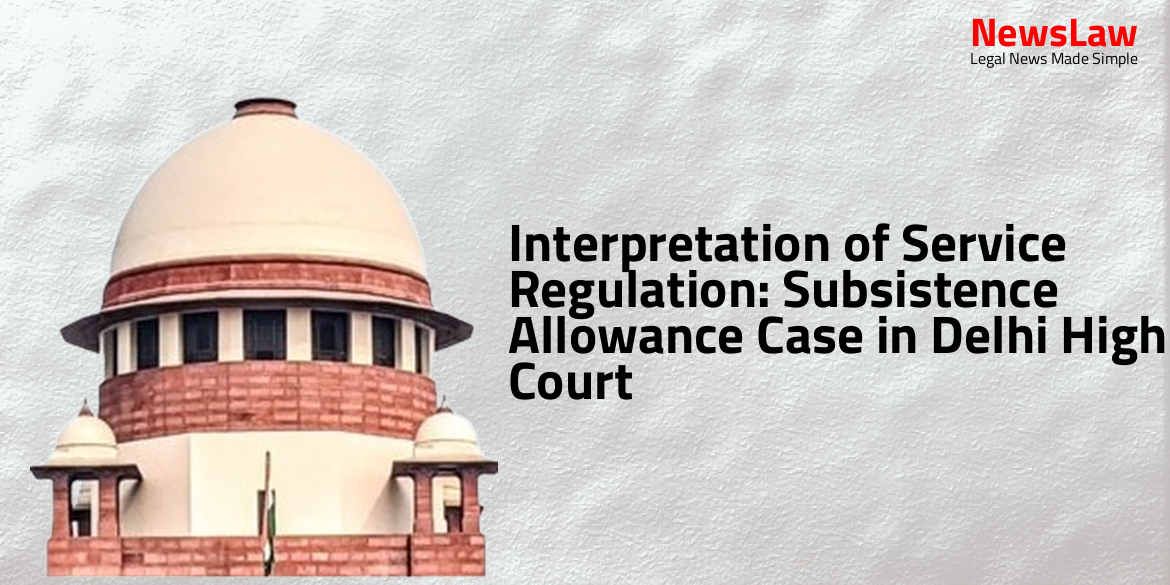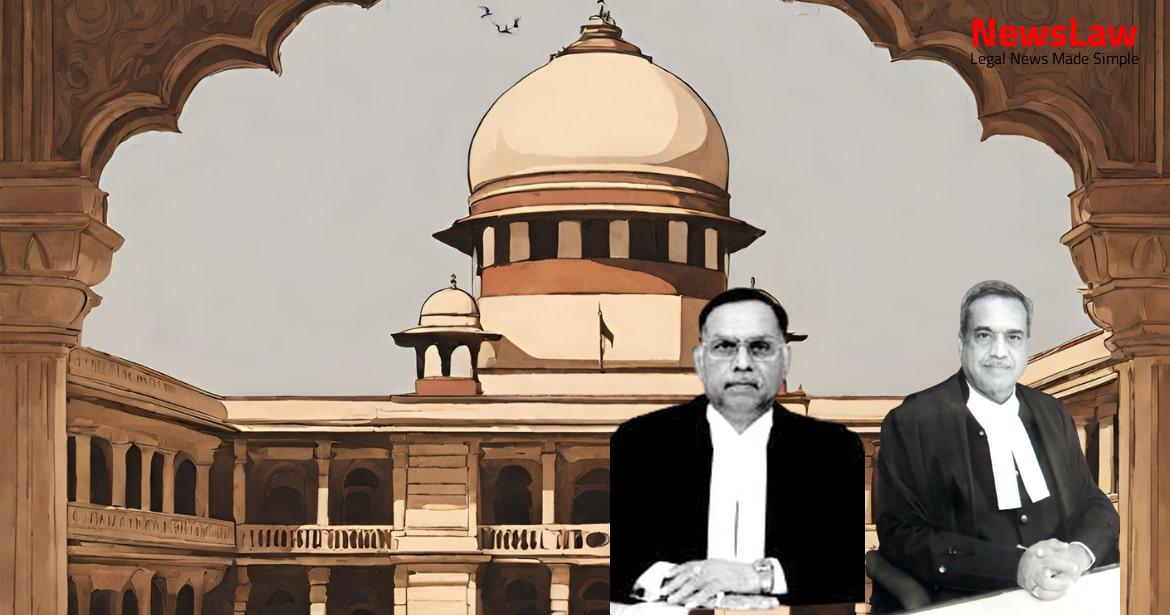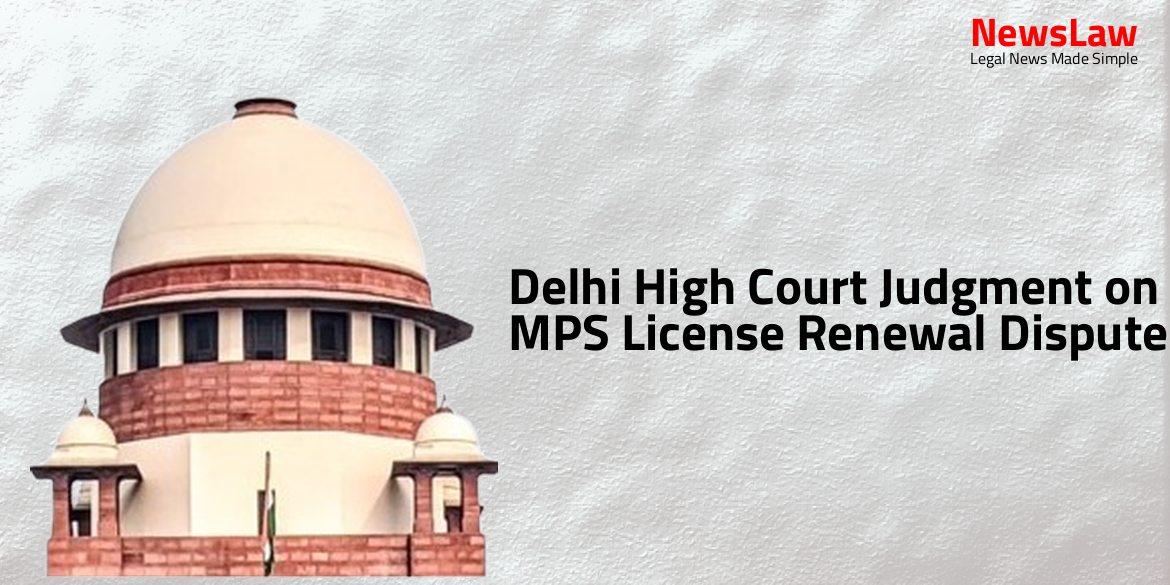In a recent judgment by the Delhi High Court, the case involving the interpretation of service regulations in a subsistence allowance dispute was settled. The dispute between the workman and the Department of Transport Corporation (DTC) focused on the amount of subsistence allowance to be paid during the suspension period. The court clarified the specific parameters within which the Labour Court must operate in such cases. Let’s delve into the details of this significant legal decision!
Facts
- Petitioner workman was suspended in 1992 on charges of not issuing tickets to passengers.
- A chargesheet was issued on 8 September 1992.
- During the suspension, subsistence allowance was provided equivalent to paid leaves in the first year.
- The allowance was later reduced to 75% of the initial amount.
- Petitioner workman had been working as a conductor with the respondent Department since 1985.
Issue
- Scope of adjudication in a claim under Section 33C(2) of the ID Act reiterated by the Court
- Emphasis on the role and functions of a Labour Court in such disputes
- Clarification on the specific parameters and boundaries within which the Labour Court must operate in this context
Arguments
- The petitioner workman challenged the reduction in payment of subsistence allowance under Section 33C(2) of the ID Act.
- The petitioner’s counsel argued that the relevant service rule provided for 3/4 of wages if suspension exceeded one year.
- The counsel for the petitioner claimed that the allowance given to the petitioner was in accordance with the rules and did not violate any rights.
- Section 15(2) of the DRTA allows reduction of subsistence allowance up to 75% in the initial first year of suspension.
- The petitioner’s allowance reduction was claimed to be in line with the provisions of Regulation 15(2) of the DRTA.
- The petitioner’s counsel asserted that the interpretation made by the court below was erroneous and that the petitioner is entitled to three quarters of the amount he received in the first year.
- The relief sought by the petitioner is that the petition be allowed and the requested reliefs be granted.
- Management has not disputed workman’s case that the applicant was placed under suspension on 01.09.1992.
- The workman contends that ‘such an amount’ in the service regulation should refer to the leave salary amount for the duration of suspension.
- The DTC argues that ‘such an amount’ should be interpreted as three-quarters of the payment made in the first year of suspension.
- The service regulation stipulates that the employee under suspension is entitled to subsistence allowance, with the disputed term being ‘such an amount’.
- The language of the regulation appears to emphasize a specific amount mentioned earlier in the rule.
- The court opines that ‘such an amount’ refers to the payment in the first year of suspension with three-quarters of that amount for any subsequent period.
- The DTC’s representative maintains that the subsistence allowance has been paid as per the regulation, and no further payment is due.
- The issue primarily revolves around the interpretation of the service rule regarding subsistence allowance during suspension.
- The DTC argues that the allowance could not be reduced unless there is a provision for delay in the domestic enquiry by the workman.
- The non-payment of the subsistence allowance as per the service regulation is deemed as an illegality by the management, according to the workman.
Analysis
- Section 33C of the Industrial Disputes Act allows a workman to claim benefits due to them that can be computed in terms of money.
- The workman can approach the Labour Court to address any questions regarding the amount of money or benefits they are entitled to receive.
- This remedy is available for pre-existing benefits arising from pre-existing rights.
- The court below correctly interpreted Section 15 of the relevant regulation regarding subsistence allowance for suspended employees.
- The payment of such allowances is discretionary and not mandatory for the employer.
- For a suspension exceeding one year, the workman is entitled to three quarters of the amount he was paid in the first year, as per the service regulation.
- The workman in this case was paid the appropriate subsistence allowance in accordance with the service regulation.
- The claim application based on misinterpretation of the service regulation is deemed misconceived and liable for dismissal.
- Section 15 of DRTA states that a suspended employee is entitled to a subsistence allowance during suspension
- In the first year of suspension, the allowance is equal to the leave salary the employee would have received if on half pay leave
- After the first year, the allowance reduces to three quarters of the initial amount
- Any compensatory allowance received by the employee before suspension may be granted additionally
- The suspended employee would only receive 75% of the initial allowance if suspension period exceeds a year
- The term ‘as such’ in the interpretation refers to the amount paid in the first year of suspension
- The Court believes the lower court correctly understood and applied the relevant laws regarding a suspended employee of the Department.
- The findings of the lower court are deemed satisfactory by this Court.
- No grounds exist to utilize the Court’s jurisdiction under Article 226 of the Indian Constitution.
Decision
- The present petition lacks merit.
- The decision passed by the Labour Court in November 2004 in I.D No 1/2004 is upheld.
- Any pending applications are also dismissed.
Case Title: RAMEHS CHAND Vs. D.T.C. (2024:DHC:3906)
Case Number: W.P.(C)-718/2005



